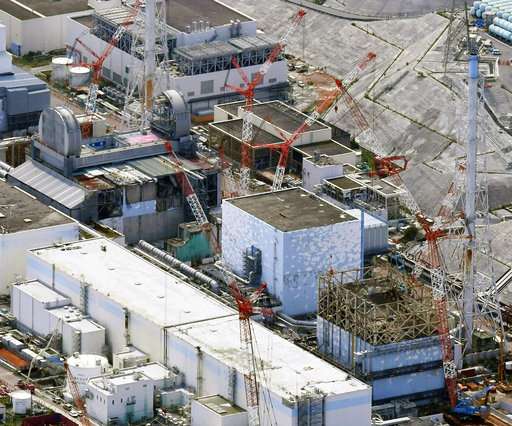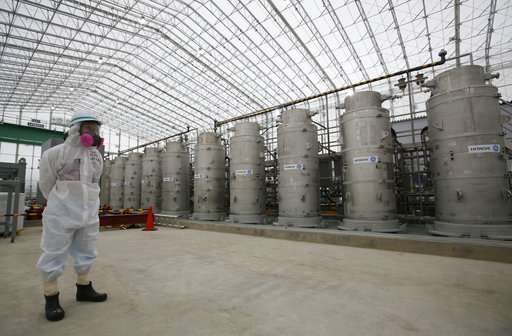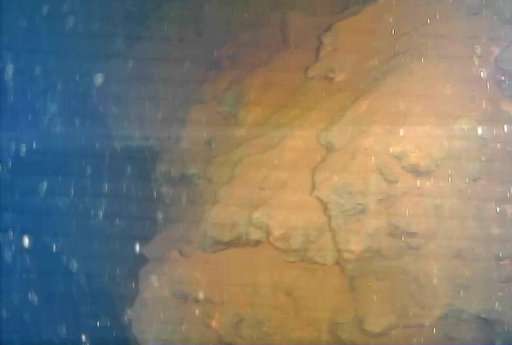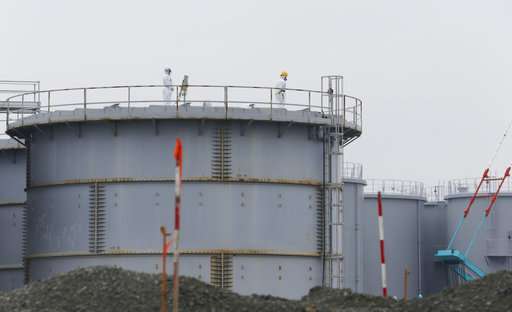Multiple challenges remain to Fukushima nuclear cleanup

Japan's government approved a revised road map Tuesday to clean up the radioactive mess left at the Fukushima nuclear power plant after it was damaged beyond repair by an earthquake and tsunami in 2011. Decommissioning the damaged reactors is an uncertain process that is expected to take 30 to 40 years.
A look at some of the challenges:
___
THE FUEL RODS
The three reactors that had meltdowns together have 1,573 units of mostly used nuclear fuel rods that are still inside and must be kept cool in pools of water. They are considered among the highest risks in the event of another major earthquake that could trigger fuel rods to melt and release massive radiation due to loss of water from sloshing or structural damage because the pools are uncovered. The plant operator, Tokyo Electric Power Co., or TEPCO, plans to begin moving the rods from reactor Unit 3 in the fiscal year beginning April 1.
However, the latest road map delays removal of the rods from units 1 and 2 for three years until fiscal 2023, because further decontamination work and additional safety measures are needed. Ironically, because the building housing reactor 3 was more heavily damaged, it is easier to remove that unit's fuel rods. The fuel rods will be moved to a storage pool outside the reactors, and eventually sent for long-term storage in what are known as dry casks.

___
THE MELTED FUEL
By far the hardest part of decommissioning Fukushima will be removing the fuel that melted and presumably spilled out of the reactor cores. In July, an underwater robot for the first time captured images inside the primary containment chamber of Unit 3. They showed a large number of solidified lava-like rocks and lumps on the chamber's floor, believed to be melted fuel mixed with melted and mangled equipment and parts of the structure.
The search for melted fuel in units 1 and 2 has so far been unsuccessful. The water level is lower, so crawling robots have been tried, but they have been obstructed by debris as well as extremely high radiation levels. Despite the unknowns about the melted fuel and debris and their whereabouts, the road map calls for finalizing the removal method in 2019, and starting actual removal at one of the reactors in 2021. The government-funded International Research Institute for Nuclear Decommissioning is developing robots and other technology to carry out the work.
___

CONTAMINATED WATER
TEPCO has treated and stored a massive amount of radioactive water—about 800,000 tons—and the volume is growing every day. Cooling water leaks out of the damaged reactors and mixes with groundwater that seeps into the basements of the reactor building, increasing the amount of contaminated water. The utility has managed to halve the volume to 200 tons per day by pumping up groundwater via dozens of wells dug upstream from the reactors, as well as installing a costly "ice wall" by freezing the ground to block some of the water from coming in and going out.
The water is stored in hundreds of tanks that cover much of the plant property. They get in the way of decommissioning work and pose another risk if they were to spill out their contents in another major earthquake or tsunami. After treatment, the water still contains radioactive tritium, which cannot be removed but is not considered harmful in small amounts. Experts say controlled release of the water into the ocean is the only realistic option, but TEPCO has not moved forward with that plan because of opposition from fishermen and residents who fear a negative image and possible health impact.
___
RADIOACTIVE WASTE

Japan has yet to develop a plan to dispose of the highly radioactive waste that will come out of the Fukushima reactors. Under the road map, the government and TEPCO will compile a basic plan during fiscal 2018. Managing the waste will require new technologies to compact it and reduce its toxicity. Finding a storage site for the waste seems virtually impossible, as the government has not been able to find a site even for the normal radioactive waste from its nuclear power plants. The prospect raises doubts about whether the cleanup can really be completed within 40 years.
© 2017 The Associated Press. All rights reserved.





















